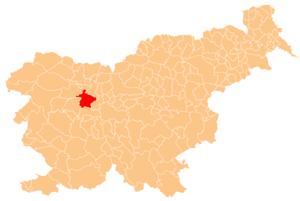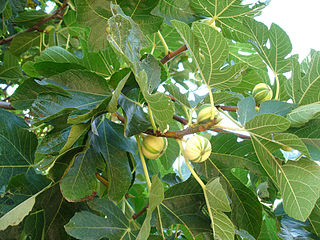
Variegation is the appearance of differently coloured zones in the leaves, and sometimes the stems, of plants. Variegated leaves occur rarely in nature. Species with variegated individuals are sometimes found in the understory of tropical rainforests, and this habitat is the source of a number of variegated house plants.

Velenje is Slovenia's fifth-largest city, and the seat of the Municipality of Velenje. The city is located in northeastern Slovenia, among the rolling green hills of the Šalek Valley, with the Kamnik–Savinja Alps to the west and the Pohorje Mountains to the east.
Hidden Lake Gardens colloquially known as Hidden Lake 755 acres (3.06 km2), is a botanical garden and an arboretum operated by Michigan State University situated in the Irish Hills of southeast Michigan. The Gardens are known for their large collection of native and nonnative trees, shrubs and flowers. HLG was given to Michigan State University by Harry Fee in 1945. Today it is visited by nearly 45,000 people annually. Hidden Lake Gardens mission is to "preserve and enhance the natural beauty of the gardens and to display plants for the inspiration and education of the public".

Hosta is a genus of plants commonly known as hostas, plantain lilies and occasionally by the Japanese name giboshi. Hostas are widely cultivated as shade-tolerant foliage plants. The genus is currently placed in the family Asparagaceae, subfamily Agavoideae, and is native to northeast Asia. Like many "lilioid monocots", the genus was once classified in the Liliaceae. The genus was named by Austrian botanist Leopold Trattinnick in 1812, in honor of the Austrian botanist Nicholas Thomas Host. In 1817, the generic name Funkia was used by German botanist Kurt Sprengel in honor of Heinrich Funk, a collector of ferns and alpines; this was later used as a common name and can be found in some older literature.

Hosta 'Undulata' is a cultivar of the genus Hosta, widely cultivated as ornamental plants in borders or as specimen plants. It was formerly regarded as a species under the name Hosta undulata(Otto & A.Dietr.) L.H.Bailey. It is not accepted as a species by the World Checklist of Selected Plant Families as of August 2011, and has been relegated to cultivar status by Schmid.
A Group is a formal category in the International Code of Nomenclature for Cultivated Plants (ICNCP) used for cultivated plants (cultivars) that share a defined characteristic. It is represented in a botanical name by the symbol Group or Gp. "Group" or "Gp" is always written with a capital G in a botanical name, or epithet. The Group is not italicized in a plant's name. The ICNCP introduced the term and symbol "Group" in 2004, as a replacement for the lengthy and hyphenated "cultivar-group", which had previously been the category's name since 1969. For the old name "cultivar-group", the non-standard abbreviation cv. group or cv. Group is also sometimes encountered. There is a slight difference in meaning, since a cultivar-group was defined to comprise cultivars, whereas a Group may include individual plants.
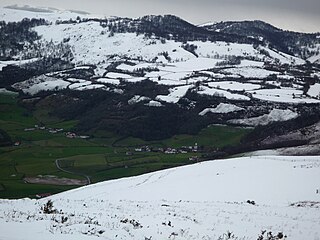
Hosta is a commune in the Pyrénées-Atlantiques department in south-western France.

The Memphis Botanic Garden is a 96-acre (39 ha) botanical garden located in Audubon Park at 750 Cherry Road, Memphis, Tennessee.
Nicolaus Thomas Host was a Croatian botanist, and the personal physician of Holy Roman Emperor Francis II. His botanical works include Synopsis plantarum in Austria and the four-volume Austriacorum Icones et descriptions graminum; he was also the first director of the botanical garden at the Belvedere palace. The genus Hosta is named for him.
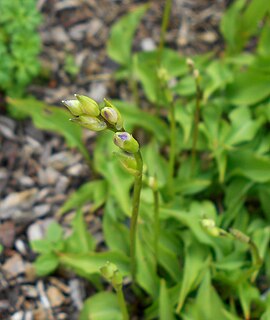
Hosta minor is a species of hosta. It is one of the smallest hostas. It is also known as Hosta sieboldii 'Alba'.
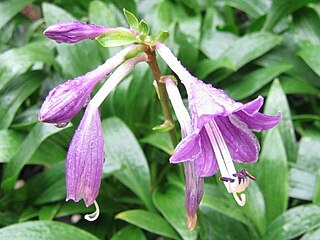
Hosta clausa is a species of the genus Hosta.
Tony Avent is an American horticulturist and plantsman. He and wife and partner, Anita Avent, own Plant Delights Nursery and established Juniper Level Botanic Garden in Raleigh, North Carolina. In addition, he is a well-known plant explorer, author and public speaker.
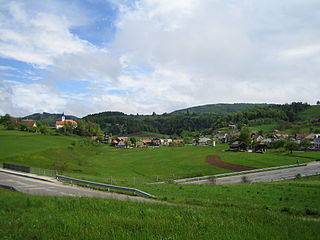
Polica is a settlement in the Municipality of Grosuplje in central Slovenia. The area is part of the historical region of Lower Carniola. The municipality is now included in the Central Slovenia Statistical Region. Polica includes the hamlets of Bliska Vas, Žabja Vas, Hrib, and Goričane.
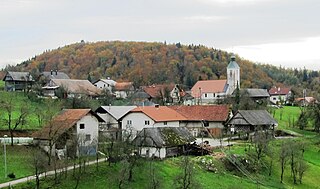
Troščine is a small village north of Polica in the Municipality of Grosuplje in central Slovenia. The area is part of the historical region of Lower Carniola. The municipality is now included in the Central Slovenia Statistical Region.
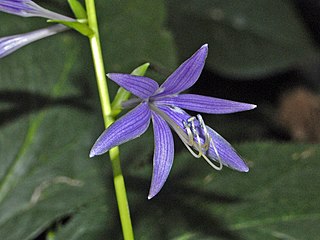
Hosta laevigata is a species plants that belong to the family Asparagaceae.
Hosta most commonly refers to:

Drimiopsis maculata, also known by the common names little white soldiers, African false hosta, African hosta, leopard plant, is a flowering plant species in the genus Drimiopsis. It is the type species of its genus. It occurs from Tanzania to South Africa.
Hosta Butte is an ancestral site in Chaco Culture National Historical Park, New Mexico. Along with Gobernador Knob and Huérfano Mountain, it forms part of the Dinétah, considered to be the birthplace of early Navajo culture. The mountain, with an elevation of 8,622 feet (2,628 m), is in close proximity to Crownpoint, New Mexico. Due to its prominence in the cosmography of Native tribes in the area, the mountain contains a number of small shrines. In 1877, photographer William Henry Jackson named the butte in honor of Francisco Hosta, who guided him to the Ancestral Puebloan ruins in Chaco Canyon.

